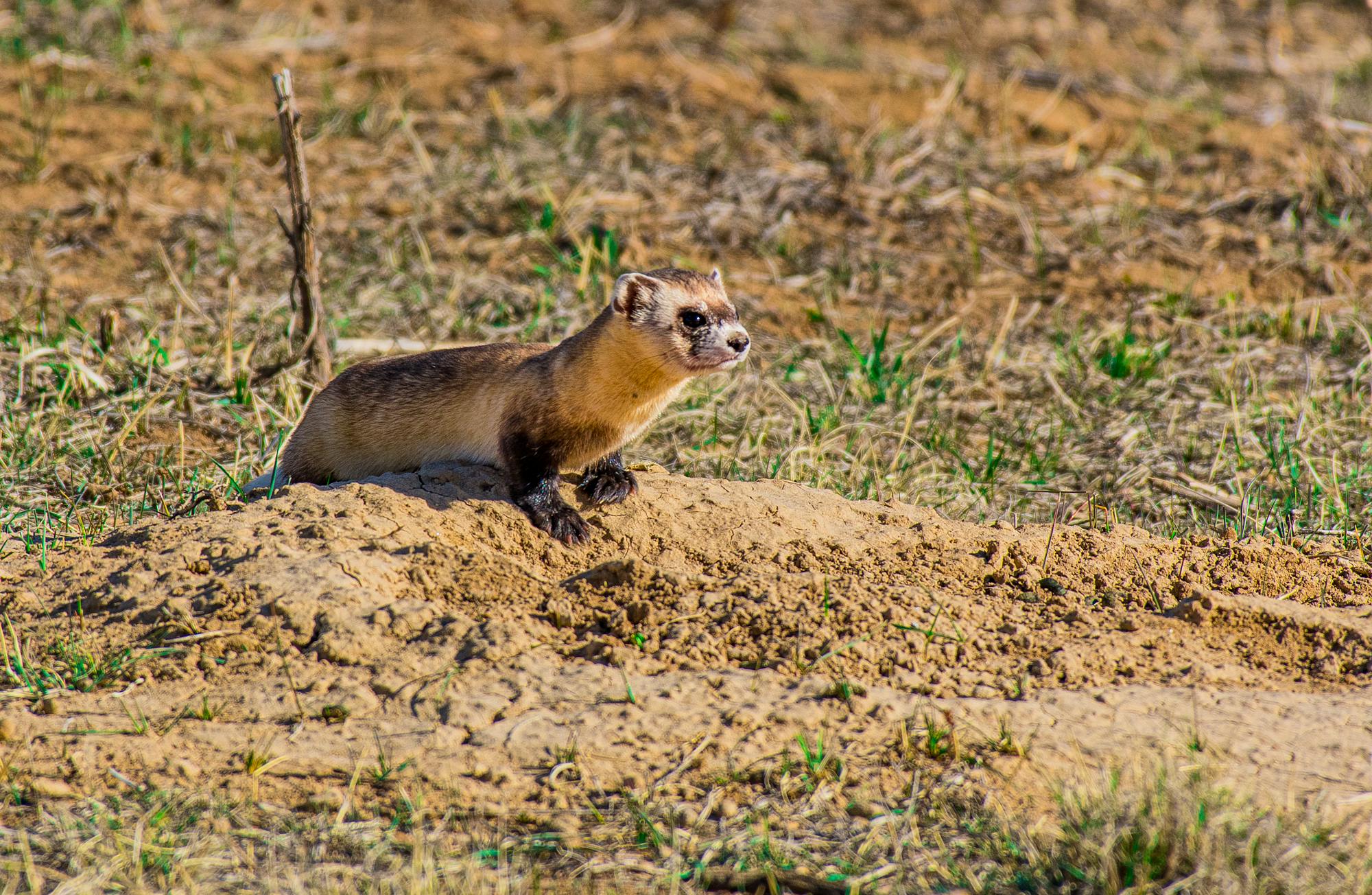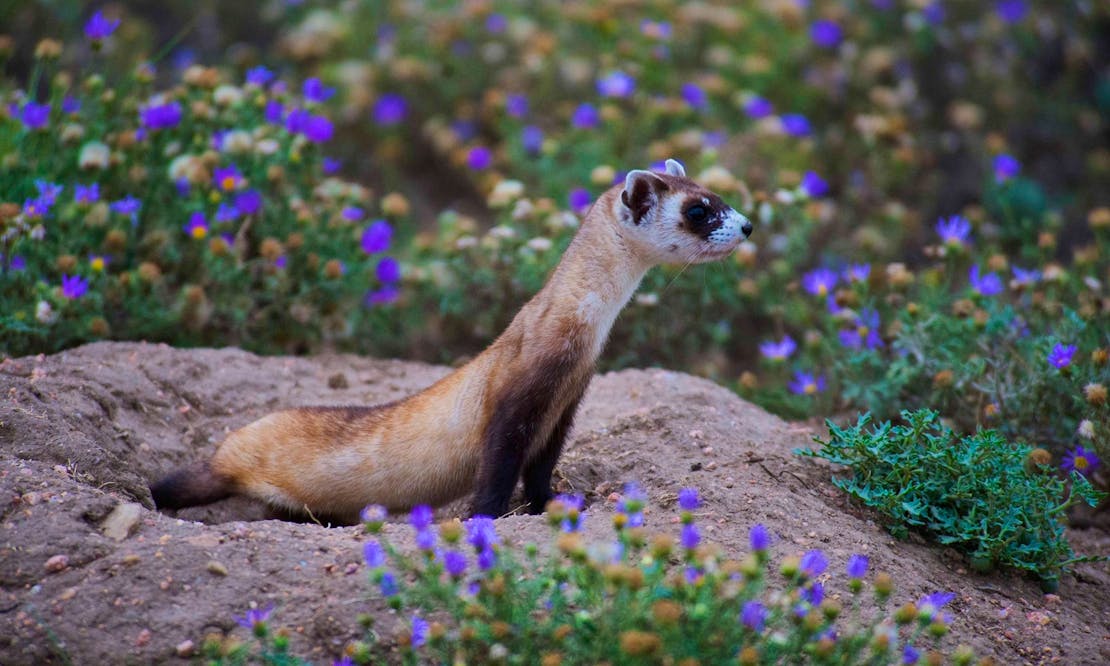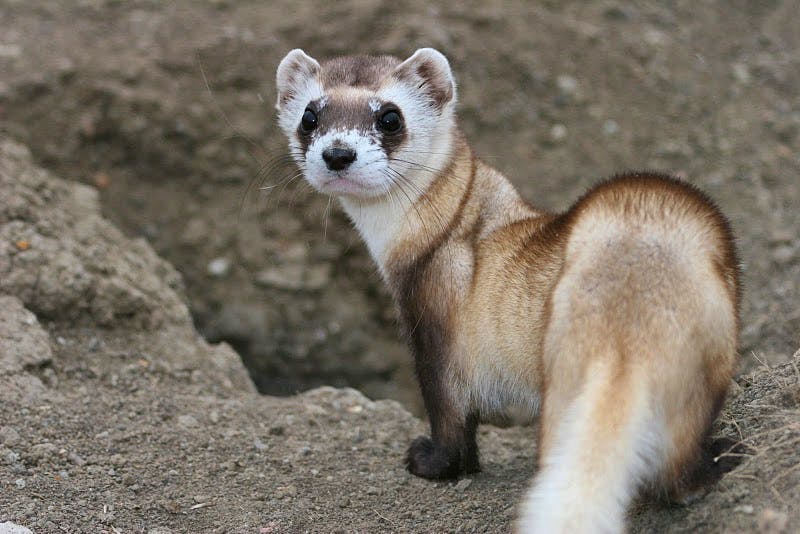“Without federal funding we could see the loss of over half of the remaining black-footed ferret population in the U.S. within the year.” – Chamois Andersen, Rockies and Plains Program Senior Representative
When prairie dog colonies — which are essential to sustain critically-endangered black-footed ferrets — are not conserved, the ferret populations experience a dramatic decline or near extinction event. They “blink out,” as we say, because it happens that fast. Conserving these prairie dog colonies, however, takes active, sustained human intervention, especially with the ever-present threat of sylvatic plague.
With only about 500 ferrets in the wild, and with the Trump administration’s mass firing of government employees and freezing of federal funding, the conservation community is fearful about the species survival.
The Black-footed Ferret Recovery Program is administered by the U.S. Fish and Wildlife Service. The animal’s endangered status is why federal, state, tribal and non-government partners have worked together over the last two decades to finance and conduct fieldwork to recover ferrets and protect their primary prey, prairie dogs. Defenders of Wildlife has long advocated for such important federal funding, and combined with our donor dollars and field support, our conservation community has made a difference to conserve large expanses of prairie dog acres, habitat needed for ferret survival. Federal funds now in jeopardy have also gone a long way to incentivize private landowners to maintain active prairie dog acres for ferrets and other animals.
Black-footed ferrets are an “umbrella” species. When we recover ferrets, we also conserve all the associated species, which in turn means we are protecting our grasslands. One of the most significant threats to ferrets and prairie dogs is sylvatic plague.
When this exotic disease — which lies dormant on the prairie — erupts, it spreads quickly by fleas to prairie dog colonies causing high mortality and impacting black-footed ferret populations. The Charles M. Russel National Wildlife Refuge ferret recovery site in Montana experienced a plague outbreak a few years ago that resulted in the loss of the entire ferret population across the nearly 1,800 acres. The Meeteetse Ranch in Wyoming — famous for the discovery of a small population of ferrets in 1981 after the animals was thought extinct — had a plague outbreak in 2023 that nearly wiped out its population.
Research to study the impacts of sylvatic plague has led to innovative technology designed to protect prairie dogs from this disease, with major support provided by FWS. These technological advances have really made a difference toward the goals to downlist the species. The proof lays in Conata Basin-Buffalo Gap National Grasslands and Badlands National Park, the largest and most successful black-footed ferret recovery site.
During the summer of 2024, Conata Basin experienced a plague outbreak that was stopped due to a major field response by our community. We dusted all the prairie dog burrows with an insecticide which kills the fleas, and trapped and vaccinated the ferrets at an exceptional speed. In the end, our September surveys found the black-footed ferret population not only survived, but prairie dogs and ferrets had expanded into new areas.
The fight against plague isn’t over. We dust and vaccinate against plague each summer on every ferret site, but there is still the risk of it erupting.
Without federal wildlife staffers and funding, however, none of these efforts are possible. And even with the win at Conata Basin, without our federal partners, we may never be able to fully recover the species in high enough numbers for their long-term survival.
The Trump administration’s cuts are throwing roadblocks in our path forward for this species, but we are finding new solutions. Nongovernment organizations, like Defenders, have long filled gaps in government funding, in addition to field support. But this gap has grown ten-fold in a matter of weeks and difficult decisions on priorities will need to be made.
We are not giving up.
Given the potentially devastating impacts to the wild ferret populations, because of the halt in federal funding, Defenders is urging Congress to do all it can to ensure the already appropriated funds are available for ferret recovery. This means ensuring funding continues at the prior year levels in both Fiscal Year 2025 and 2026, including funds through the FWS, Tribal Wildlife Grants, Inter-agency agreements and funding for the ferret recovery roles of the U.S. Forest Service, the National Park Service and the U.S. Department of Agriculture's Animal and Plant Health Inspection Service.
Black-footed ferrets and prairie dogs are at the heart of our grasslands conservation work. We will regroup, find additional resources, advocate for reinstatement of these positions and funding, and continue the on-the-ground fieldwork to help these species continue to contribute to the health of our grasslands.











Follow Defenders of Wildlife
facebook bluesky twitter instagram youtube tiktok threads linkedin